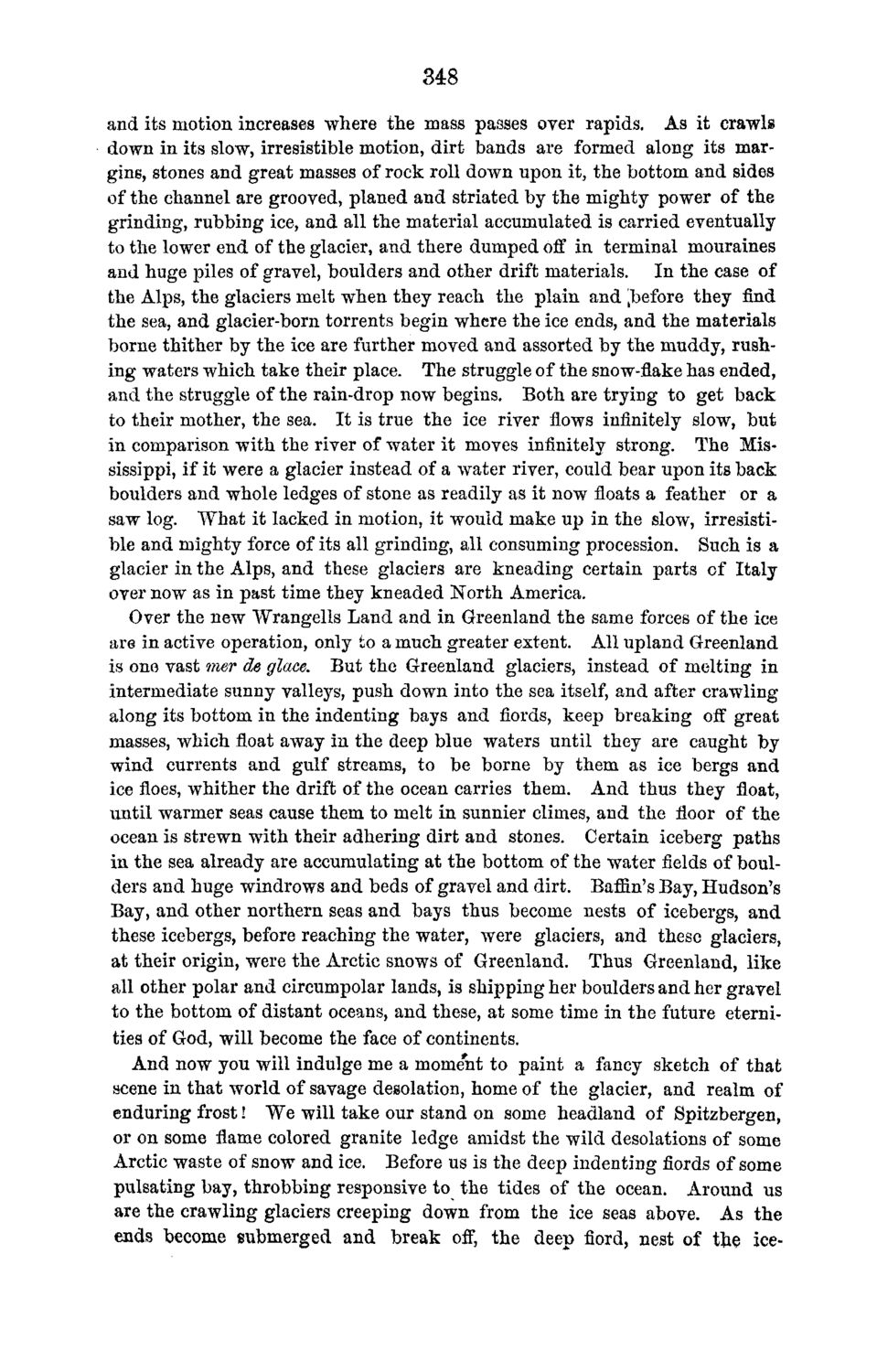| |
| |
Caption: Board of Trustees Minutes - 1870
This is a reduced-resolution page image for fast online browsing.

EXTRACTED TEXT FROM PAGE:
348 and its motion increases where the mass passes over rapids. As it crawls down in its slow, irresistible motion, dirt bands are formed along its margins, stones and great masses of rock roll down upon it, the bottom and sides of the channel are grooved, planed and striated by the mighty power of the grinding, rubbing ice, and all the material accumulated is carried eventually to the lower end of the glacier, and there dumped off in terminal mouraines and huge piles of gravel, boulders and other drift materials. In the case of the Alps, the glaciers melt when they reach the plain and ^before they find the sea, and glacier-born torrents begin where the ice ends, and the materials borne thither by the ice are further moved and assorted by the muddy, rushing waters which take their place. The struggle of the snow-flake has ended, and the struggle of the rain-drop now begins. Both are trying to get back to their mother, the sea. It is true the ice river flows infinitely slow, but in comparison with the river of water it moves infinitely strong. The Mississippi, if it were a glacier instead of a water river, could bear upon its back boulders and whole ledges of stone as readily as it now floats a feather or a saw log. "What it lacked in motion, it would make up in the slow, irresistible and mighty force of its all grinding, all consuming procession. Such is a glacier in the Alps, and these glaciers are kneading certain parts of Italy over now as in past time they kneaded North America. Over the new Wrangells Land and in Greenland the same forces of the ice are in active operation, only to a much greater extent. All upland Greenland is one vast mer de glace. But the Greenland glaciers, instead of melting in intermediate sunny valleys, push down into the sea itself, and after crawling along its bottom in the indenting bays and fiords, keep breaking off great masses, which float away in the deep blue waters until they are caught by wind currents and gulf streams, to be borne by them as ice bergs and ice floes, whither the drift of the ocean carries them. And thus they float, until warmer seas cause them to melt in sunnier climes, and the floor of the ocean is strewn with their adhering dirt and stones. Certain iceberg paths in the sea already are accumulating at the bottom of the water fields of boulders and huge windrows and beds of gravel and dirt. Baffin's Bay, Hudson's Bay, and other northern seas and bays thus become nests of icebergs, and these icebergs, before reaching the water, were glaciers, and these glaciers, at their origin, were the Arctic snows of Greenland. Thus Greenland, like all other polar and circumpolar lands, is shipping her boulders and her gravel to the bottom of distant oceans, and these, at some time in the future eternities of God, will become the face of continents. And now you will indulge me a moment to paint a fancy sketch of that scene in that world of savage desolation, home of the glacier, and realm of enduring frost! We will take our stand on some headland of Spitzbergen, or on some flame colored granite ledge amidst the wild desolations of some Arctic waste of snow and ice. Before us is the deep indenting fiords of some pulsating bay, throbbing responsive to the tides of the ocean. Around us are the crawling glaciers creeping down from the ice seas above. As the ends become submerged and break off, the deep fiord, nest of the ice-
| |